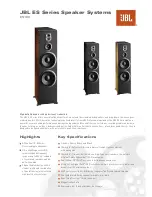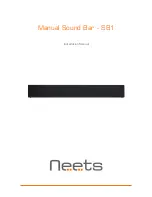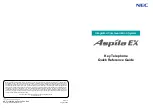
page 4 – 51
WheatNet-IP
/ Apr 2009
W H E A T N E T - I P N A V I G A T O R G U I
WheatNet-IP Rear
BLADE LIO Info Tab
The fourth tab is the BLADE “LIO Info” tab. This tab brings up a screen you can
use to program and control the operation of the 12 physical Logic Input/Output ports
on each BLADE. These ports are available on the two RJ-45 jacks on the rear of the
BLADE. Each of these 12 ports can be individually defined as
a logic input or a logic output, and can be mapped to a number
of different functions.
The LIO info tab is arranged as a table, with logic ports listed
along the left side, and attributes listed across the top. Each
row, or line, therefore shows the logic settings for a particular
logic port. Recall that each BLADE has twelve ports available;
they are named LIO 1 pin 2 through LIO 1 pin 7, representing
the six logic ports available on the first RJ-45 rear panel logic jack, and LIO 2 pin 2
through LIO 2 pin 7, representing the six logic ports available on the second RJ-45 rear
panel logic jack. The logic port names not so subtly reflect the physical pin number
of the logic jack, so it is easy to correlate the GUI functions with the corresponding
physical connection. These pin numbers have been chosen so they mate up with some
common Wheatstone auxiliary switch panels; when they are used for logic outputs,
power is available on pins 1 & 8.
The logic functions that have been programmed will appear in this table, giving
you an at-a-glance summary of the physical logic ports on the BLADE. In the row for
a particular port you will see whether it has been programmed as an input or an output,
the name of the logic function configured for the port (if one has programmed), the eight
character name (the one that appears on the crosspoint grid) you’ve given to the logic
signal, the salvo it has been programmed to fire, or the temporary XPoint connection it
has been programmed to trigger. Note that the three possible uses of the logic port are
mutually exclusive; a logic port can be programmed as a logic only signal for use in
connecting to other logic signals on the grid, or it can be programmed to fire a salvo,
or it can be programmed to trigger a connection. It can only do one of these things.
The LIO Info tab shows which programming options have been set for each of the
12 physical ports. If nothing has programmed, the info will be shown as “<none>.”
WheatNet-IP
/ Oct 2012
















































